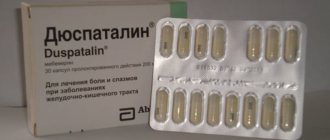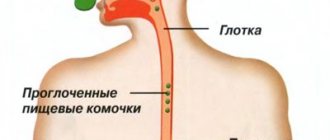What is pancreatitis
Pancreatitis is a disease of the pancreas (hereinafter referred to as the pancreas), of an inflammatory nature, in which a destructive change in the tissues of the organ occurs. Over time, the elements of the gland begin to atrophy, they are replaced by fibrous (connective) tissue, and cysts or dense formations similar to stones form in the excretory ducts. The exocrine and endocrine function of the pancreas is lost.
Causes
There are several known factors that can provoke the onset of the pathological process (cystic fibrosis, hypertriglyceridemia, obstruction of the sphincter of Oddi, autoimmune disorders).
But two other causes of chronic pancreatitis - cholelithiasis and long-term alcohol abuse - are considered the most common. In the first case, inflammation of the pancreas results from the transfer of infection from the bile ducts to the gland through the lymphatic vessels. In the second case, destructive changes become a consequence of the constant and long-term toxic effects of ethyl alcohol.
Pancreatitis
Etiological mechanism
Despite all the efforts of scientists around the world, it is not possible to fully establish the etiological processes that give rise to the disease, and for effective treatment, knowledge of the causes of the pathology is very important. In this regard, when chronic pancreatitis is analyzed, the recommendations of the International Association of Gastroenterologists provide a classification of the disease according to etiological criteria.
Also read on our website: Etiology of chronic pancreatitis: common and hidden causes
The following types of pathology are distinguished:
- toxic (metabolic) pancreatitis, here alcoholic (more than 2/3 of all cases) and drug type are especially distinguished;
- idiopathic;
- infectious;
- biliary-dependent, hereditary;
- autoimmune;
- obstructive.
In general, chronic pancreatitis can develop as a continuation of acute pancreatitis, or directly as a chronic type.
In addition to alcohol intoxication, it is recommended to take into account the following most common causes: cholelithiasis, chemical poisoning, infectious diseases (paratitis, hepatitis, etc.), improper or inadequate nutrition; local circulatory disorders (spasms, blood clots), renal failure, various inflammatory processes.
Alcoholic pancreatitis
The chronic stage is most often diagnosed in those who take from 20 to 100 ml of alcohol-containing drinks daily for two to five years. It develops gradually: first, damage to the epithelial cells lining the inner layer of the pancreatic ducts is observed. Then the parenchyma of various parts of the pancreas becomes inflamed.
The quality of alcohol and its type do not matter: symptoms of chronic pancreatitis can appear in lovers of vintage cognac, and in beer bar regulars, and in people who buy cheap surrogate.
If a drinker smokes or likes fatty foods, he is at risk of reactive development of the disease.
Recommendations for the treatment of pathology
When a doctor diagnoses a disease and prescribes treatment for chronic pancreatitis, the recommendations are comprehensive, taking into account preventive measures. Conservative treatment should be carried out taking into account the following recommendations:
- First of all, there is a strict ban on alcoholic beverages and smoking.
- A pancreatic diet is provided with small, frequent meals, excluding fatty, spicy, and fried foods from the menu.
- Measures are being taken to relieve pain in the abdominal area. Initially, analgesics (Paracetamol) and non-steroidal anti-inflammatory drugs (Tramadol) are recommended.
- Prescription of drugs to normalize secretory functions. Microtablets or mini-microsphere Pancreatin are recommended. When using enzyme agents, you should simultaneously take medications that block acid production, namely, H2 blockers or proton pump inhibitors.
- The effectiveness of conservative treatment methods should be determined by weight gain and reduction of symptomatic manifestations. If there is even the slightest doubt about the correctness of the treatment regimen, then it is necessary to ensure that laboratory and instrumental studies of the effectiveness of replacement therapy using enzymes are carried out.
- A positive result with replacement therapy is achieved only with the correct dosage selection. It must take into account the degree of the disease, the age of the patient and the individual characteristics of the body.
- To exclude the psychological factor and increase the effectiveness of analgesics, tricyclic antidepressants are recommended.
Chronic pancreatitis has various pathogenesis and clinical manifestations. To facilitate diagnosis, guidelines are developed for the assessment, classification and treatment of the disease.
Symptoms
The initial stage proceeds, as a rule, without any manifestations. A slight malaise is possible, but its appearance is in no way associated with damage to the pancreas.
Pain as the main symptom
A person seeks help already when a severe exacerbation develops; the pain in chronic pancreatitis is paroxysmal and can also be girdling in nature. They arise in the left hypochondrium in the upper abdomen. Sometimes they radiate to the projection of the heart.
Nausea and vomiting
The pain may be accompanied by various dyspeptic disorders (bloating, severe flatulence, heartburn). Some patients experience debilitating vomiting. Her next attack does not bring relief to the person. Nausea is constantly present only during periods of severe exacerbation; with a sluggish course, it usually does not bother.
Other manifestations
When chronic alcoholic pancreatitis develops, the patient usually loses weight quickly. This is due to the fact that the number of enzymes involved in food processing is significantly reduced, so the body cannot absorb essential microelements. Because of this, stool becomes irregular: in alcoholics, diarrhea is often replaced by constipation. There is a decrease in appetite and the appearance of apathy. When collecting anamnesis, a clear picture emerges, which allows you to draw the first correct conclusions.
Examination of the patient reveals yellowness of the sclera. The skin of the body is dry, yellow-brown in color. Red spots sometimes appear on the chest and abdomen, shaped like drops. After pressing with a finger, they do not disappear anywhere.
Palpation of the abdomen reveals moderate swelling and tenderness in the upper half of the stomach, around the navel.
Features of the manifestation of the disease
When chronic pancreatitis is diagnosed, clinical guidelines are important in classifying the signs of the disease. It is recommended to distinguish the following clinical forms of manifestation of the disease: pain, dyspeptic, combined and latent symptoms; and according to the nature of the course of the disease, it is a rarely and often recurrent, as well as constantly manifesting type.
Based on morphological characteristics, the following subtypes of pathology are distinguished: interstitial-edematous, parenchymal, fibrous-sclerotic, hyperplastic and cystic pancreatitis. Finally, the pathology is divided according to possible complicating factors: with impaired bile secretion; subhepatic hypertension; with the development of endocrine pathologies.
It is recommended to highlight pain and pancreatic dysfunction as primary clinical signs. A characteristic symptom is pain in the abdomen. This sign requires special analysis during initial diagnosis.
Pain most clearly manifests itself in the right zone of the epigastric region if the glandular head is inflamed; on the left - when the source of inflammation is located in the body of the pancreas, and in the hypochondrium on the left side - when the tail of the organ is affected.
Pain often radiates to the back (girdling pain); along the edge of the ribs to the spine; in the area of the heart (resembling angina pectoris); into the shoulder blade and shoulder on the left side; down into the iliac region.
Gland dysfunction is caused by impaired absorption of fats and proteins. It manifests itself in the form of dyspeptic symptoms (flatulence, bloating, steatorrhea), weight loss, signs of maldigestion and malabsorption. In the advanced stage, endocrine disorders are identified.
Also read on our website: Vomiting in acute pancreatitis: causes and help
It is recommended to distinguish the following stages of chronic pancreatitis:
- stage 1 - preclinical phase - when the symptoms are not yet pronounced;
- stage 2 - the period of initial manifestation - periodic exacerbations with severe symptoms, the duration of the period is 5-8 years;
- stage 3 is characterized by constant pain, loss of appetite, and weight loss;
- stage 4 - atrophy of the gland - functional disorders, endocrine insufficiency are observed, and dangerous complications can arise.
Clinical guidelines
In the acute phase, the patient is shown hunger, cold, rest and symptomatic therapy. It is carried out under the supervision of a gastroenterologist. The patient is required to completely abstain from alcohol, but even in this case, the specialist cannot guarantee a complete recovery.
Diagnostics
It all starts with a conversation. The doctor collects the patient’s complaints, describes the food history, finds out what kind of alcohol the patient takes, for how long, and in what quantities. To clarify the general picture of the disease, the following is carried out:
- laboratory tests (general and biochemical blood tests, urinalysis, coprogram, radioimmunoassay, tests for enzyme activity)
- instrumental research methods (ultrasound, EUS, CT, MRI);
- functional tests with specific stimulants of secretion function.
At this stage, diagnostics should help identify all the signs of chronic pancreatitis and determine the stage of development of the inflammatory process. Based on the data obtained, a therapeutic regimen is developed.
Endoscopic ultrasound of the pancreas
Conservative methods
Treatment of pancreatic inflammation begins with eliminating existing symptoms. The patient is prescribed:
- non-narcotic analgesics for pain relief;
- antiemetics to relieve nausea and vomiting;
- preparations of ready-made enzymes that can stimulate the production of pancreatic juice.
When diabetes is diagnosed, small doses of insulin must be included in the treatment regimen. It is considered advisable to take vitamins A, E, K, and D.
Diet: what can you eat with this disease?
Not everyone knows how to restore the pancreas in case of chronic pancreatitis. Doctors do not always explain to their patients that they now need to eat right. The menu must include products that can reduce the inflammatory process and restore pancreatic function.
Fried foods, fresh fruits and vegetables that can provoke rotting and fermentation processes in the intestinal tract, spices, and seasonings are prohibited. The diet should be light, low in calories, the daily intake should include 30% protein (preferably animal, not plant origin).
It is better to boil or bake in the oven or steam the products. The regimen is fractional (5-6 times a day).
Understanding what you can eat with chronic pancreatitis and what you can’t, it’s not difficult to create your own menu for the day, for the week, for the month. Patients are allowed:
- porridge in plain water, cooked with semolina, buckwheat and oatmeal;
- vegetable soups with a slimy consistency;
- milk – low-fat cottage cheese, kefir, yogurt, cheeses;
- meat: rabbit, turkey, chicken;
- fish, mostly river, not fatty;
- vegetables - potatoes, zucchini, broccoli, pumpkin, cucumbers;
- fruits – sweet apples, pears (only after cooking in the oven);
- desserts - jelly, marshmallows, mousses, honey, marshmallows.
Operation
Indications for surgical treatment may include the appearance of an abscess or phlegmon, obstruction of the pancreatic ducts, sclerosis and calcification of pancreatic tissue, and rupture of cysts.
The method of intervention and its volume are determined by the surgeon. Surgery for chronic pancreatitis is the only chance to bring back to life a patient suffering from a severe course of the disease that is not amenable to drug therapy.
But its implementation sharply worsens the prognosis. The risk of death is high.
Case history of CP: surgical treatment
In some cases, treatment with medications does not produce a therapeutic effect, so doctors prescribe surgery. Which method of surgical intervention will be prescribed to the patient is determined individually, based on the condition of the pancreas, symptoms and a number of indications.
The first type of surgical intervention is called longitudinal. It is recommended if the size of the gland duct is at least 6-7 cm. Partial surgery is prescribed if the duct is not dilated. This procedure involves removing only the inflamed gland tissue. The patient is required to undergo preoperative preparation. Surgery and its medical history for chronic pancreatitis includes a number of diagnostic measures. So, 24 hours before the surgical intervention, food intake is completely excluded, fluid intake should be minimal.
After completion of surgical therapy, the patient remains in the hospital under the supervision of a surgeon and gastroenterologist for at least 10-14 days.
In rare cases, the patient needs surgery
Prevention of exacerbations
A healthy lifestyle and a complete cessation of alcohol and smoking are the basic rules for preventing a new exacerbation. It is required to adhere to a balanced diet, as well as regular examination by your doctor at least once a year.
Primary prevention of chronic pancreatitis is based on following a balanced diet, avoiding overeating, and limiting the consumption of fatty foods and light carbohydrates. It is important to drink at least two liters of water per day in winter and summer, to include in your diet foods that can provide the required set of macro and microelements.
Possible complications and prognosis
With complete abstinence from alcohol and compliance with all clinical recommendations of the attending physician, the disease is mild, and the survival prognosis is favorable. But if the patient violates the diet, abuses bad habits and refuses adequate treatment, degenerative processes progress in the pancreas tissues.
Severe complications of chronic pancreatitis often develop (pathological cysts, fistulas, obstructive jaundice, diabetes mellitus, the formation of adenocarcinoma - a malignant tumor). Conditions of this nature often require immediate surgical intervention.
Pancreatitis - treatment
Treatment of acute pancreatitis
Treatment of acute pancreatitis should be carried out in a hospital under the supervision of a physician. If acute pancreatitis is suspected, the patient should be hospitalized immediately. You should not eat food until the ambulance arrives. But before a person is taken to the hospital, everything possible should be done at home to avoid painful shock. To relieve spasms, it is recommended to drop 1-2 drops of nitroglycerin under the tongue or inject intramuscularly a drug that relieves spasms, for example, no-shpa. Cold is applied to the upper abdomen to slow down the digestive enzymes of the pancreas. Emergency doctors always give an anesthetic injection.
In the hospital, conservative methods of therapy are used to treat acute pancreatitis. In particular, solutions are introduced into the bloodstream - saline solutions, protein preparations, glucose, with the help of which intoxication is overcome and pain is relieved. The acid-base balance is also normalized.
To relieve pain and relieve spasms, antispasmodics are used. The course of treatment must include drugs to suppress the production of pancreatic enzymes. Additionally, medications are used to maintain normal heart function. Complex treatment also includes B vitamins, vitamin C, and diuretics that prevent swelling of the pancreas and promote the removal of waste products.
It is recommended to drink mineral water without gas, but patients with acute pancreatitis can only take food 4-5 days after the acute onset of the disease. Start with yogurt (100 g of product every half hour), and the next day after this diet, add 200 grams of cottage cheese. In the following days of treatment, the patient must strictly follow a special diet, since proper nutrition for pancreatitis is the most important factor contributing to healing.
If conservative treatment of the pancreas is ineffective, surgery may be prescribed. Surgical intervention involves removing part of the pancreas that has undergone necrosis and sanitation of the abdominal cavity. As a rule, the operation is performed 10-14 days after diagnosis (from the moment of the first attack of acute pain). Some complications are indications for faster surgery.
Treatment of chronic pancreatitis
Treatment of chronic pancreatitis is primarily a diet. As for medications, it is necessary to take enzymes that compensate for secretory deficiency and alkalizing drugs (for example, Almagel). If pain occurs, drugs that relieve spasms are indicated - papaverine, atropine, no-spa, drugs with an analgesic effect.
Patients with chronic pancreatitis should periodically visit special sanatoriums and undergo treatment there. If chronic pancreatitis is in the acute stage, then treatment is carried out according to the same scheme as the treatment of acute pancreatitis.
Is it possible to permanently cure chronic pancreatitis? It depends on the form of the disease. If pancreatitis is hereditary or autoimmune, then treatment will be long-term and “supportive”. In any case, with the right diet, long-term remission of the disease is possible.
Folk remedies for chronic pancreatitis
A good folk remedy that eases well-being during pancreatitis is oatmeal jelly. To prepare it, you need to take one glass of oats, rinse it with cold water, add 1 liter of water and leave for 12 hours. Next, cook for 30 minutes and leave for another 12 hours, after which dilute the jelly with boiled water to the original volume and strain. Patients with chronic pancreatitis should take half a glass of oatmeal jelly three times a day before meals.











